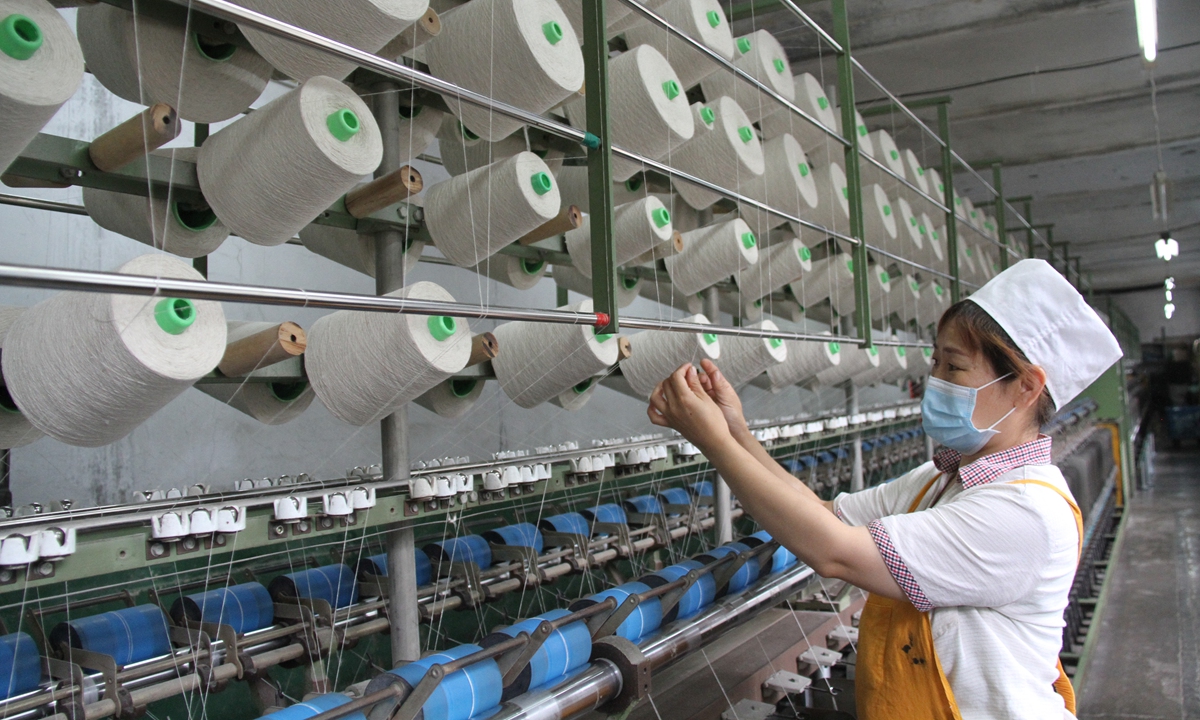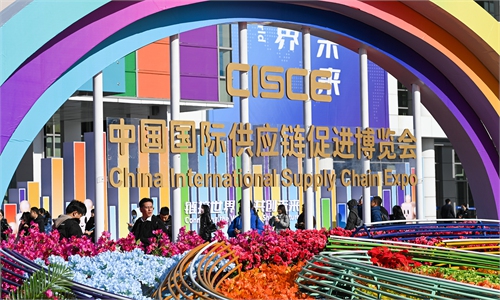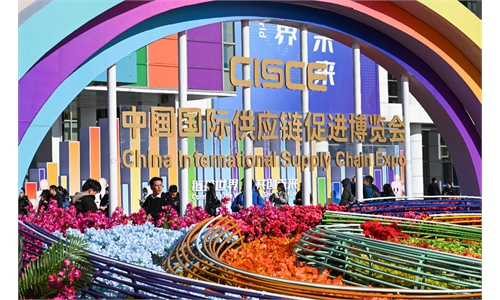
A worker at a spinning workshop of a textile company in North China's Shanxi Province on July 23. Producing hemp textiles, the company exports its products to the US, Japan and South Korea. Photo: cnspho
More than 20 years ago, products from China were essential for American homes, with textiles being the most significant. Hence there was a saying, "Chinese textile workers use a needle and thread to stitch the bond between China and the US." Today, if we observe the China-US relationship from the textile perspective, what kind of feeling will there be?
The proportion of China's textile and apparel exports to the US peaked in 2010 at 41.2 percent but has since declined steadily. By the first quarter of 2023, it had fallen to 20.6 percent. This decline is particularly notable in cotton textile and apparel products. China Customs data shows that China's cumulative exports of textiles and clothing from January to April this year reached $92.89 billion, a year-on-year decrease of 2.9 percent.
There are two main reasons for this decline. One factor is the pandemic which led to excess inventory in the US. The other factor is the trade conflict between the US and China, including the ban on textile imports containing Xinjiang cotton due to so-called human rights issues.
Textiles are the backbone of China's manufacturing industry, and curbing China's textile exports on a global scale is essentially breaking the Chinese people's "rice bowl" - depriving them of their means of making a living. Such suppression has become a major tool in the US' strategy toward China, and it extends beyond textiles and the domestic market.
Manufacturing is a vital sector for employment, so competition in this area is also a fight for livelihoods and national power. From the American perspective, they feel that the Chinese people have taken away their "rice bowl" in recent decades, so now they want to protect their own livelihoods and break the Chinese one.
The reasoning behind the US competitive strategy toward China is that China's manufacturing industry is forging ahead and continuing to dominate the industrial chain, eventually leading to China surpassing the US and becoming the dominant global force.
The Chinese have stated that they do not seek to compete with the US for global leadership but rather aim to focus on achieving their sustainable development goals. However, Washington views this as a power transition and a zero-sum game between products made in the US and those made in China for the global market. This perspective is evident in the way the US threatens sanctions against third-country companies that choose to cooperate with Huawei.
The battle for the "rice bowl" is also a war, although it is no longer about the survival of life and death in the smoke and fire of the battle of victory and defeat. Both sides in a war inevitably experience losses, making it a test of their respective endurance.
What we are seeing is that the reduction in imports from China has not resulted in an increase in the number of jobs in textile production in the US. These jobs have moved from China to other developing countries. The shift in the supply chain and industrial chain is bound to increase costs, which has been an important driver of persistent inflation in the US.
So far, the US is attempting to find ways to reduce inflation while reducing the dependence on the "Made in China" brands. US President Joe Biden announced on November 27 the establishment of the White House Council on Supply Chain Resilience, co-chaired by National Security Advisor Jake Sullivan and National Economic Council director Lael Brainard. White House officials told the media that key supply chains, including pharmaceuticals and semiconductors, should avoid geopolitical risks.
The current China-US relationship can't be explained by traditional theories of foreign relations or the Cold War model. How can China-US relations become more stable if "Made in China" in the American market keeps diminishing, and the American element in Chinese manufacturing undergoes the exact same change?
When the White House's policy begins to be implemented in all directions and cannot be easily reversed, the transfer of manufacturing from China will impact the market, investment and trade of the world. This will lead to a fractured global chain and particularly disrupts the industrial chains and supply chains that have already been established by China and many developing economies.
China needs to be better prepared and adjust its strategy accordingly, and it has the responsibility to unswervingly promote opening-up to the world and ensure the security and stability of the global supply chain.
The author is a senior editor with the People's Daily, and currently a senior fellow with the Chongyang Institute for Financial Studies at Renmin University of China. dinggang@globaltimes.com.cn. Follow him on X @dinggangchina



